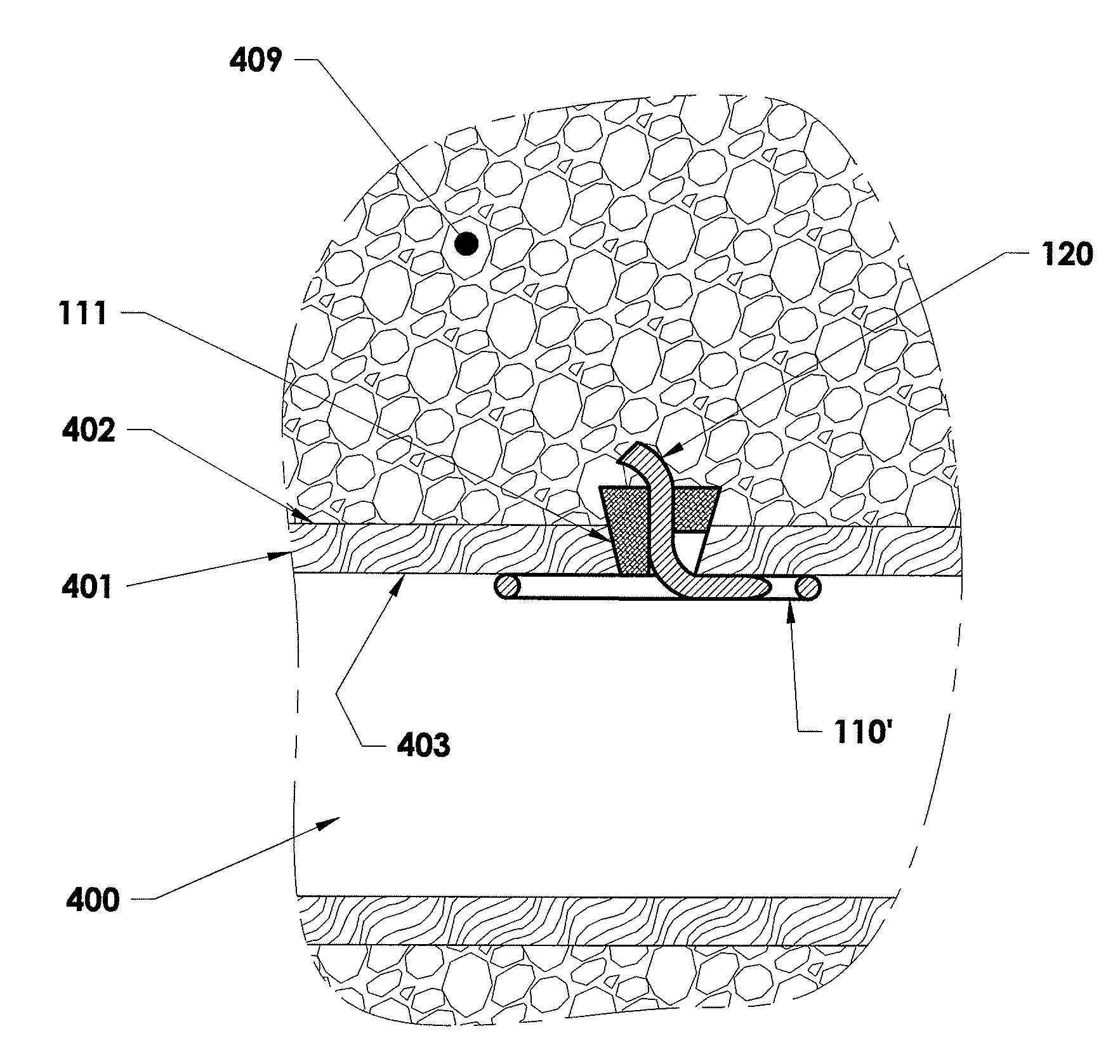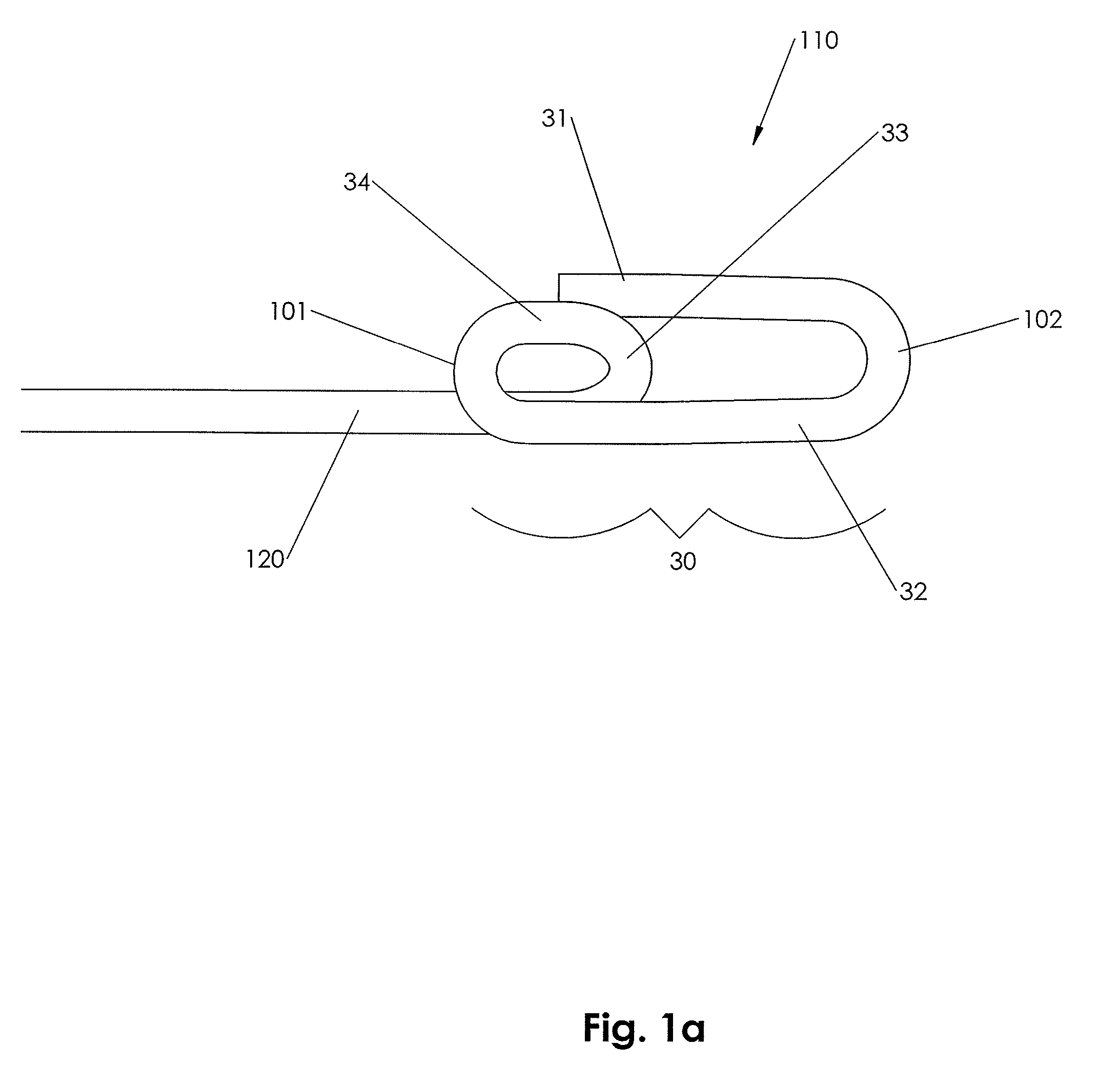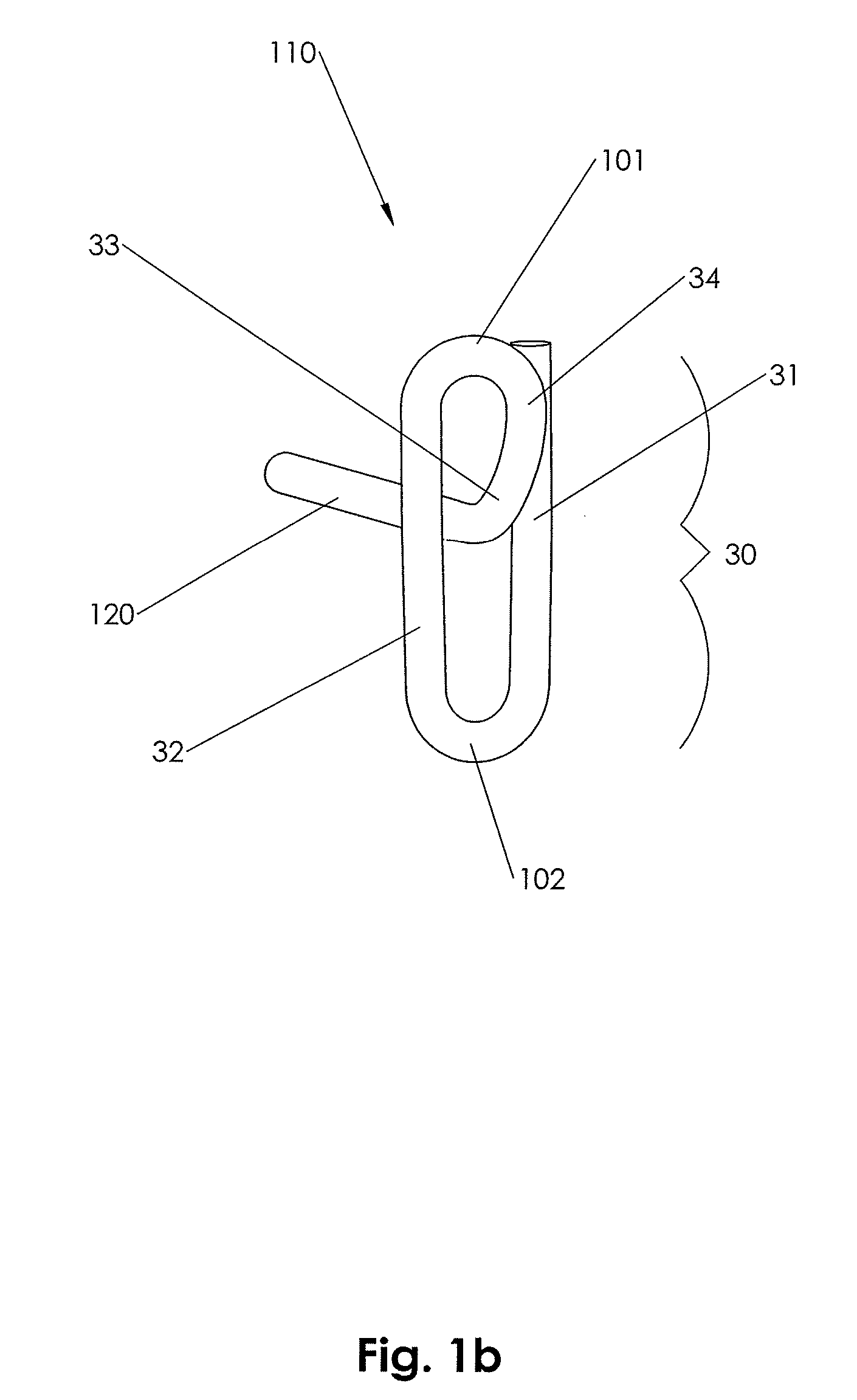Closure device, deployment apparatus, and method of deploying a closure device
a technology of closure device and deployment apparatus, which is applied in the field of medical devices and methods, can solve the problems of not providing a closure device, and achieve the effects of preventing or stopping bleeding, ensuring early ambulation of patients, and improving sealing
- Summary
- Abstract
- Description
- Claims
- Application Information
AI Technical Summary
Benefits of technology
Problems solved by technology
Method used
Image
Examples
Embodiment Construction
[0158]Reference will now be made in detail to the present preferred embodiments of the invention, examples of which are illustrated in the accompanying drawings.
[0159]In accordance with an embodiment of the present invention, closure device 100 comprising a footplate 110 (the footplate may include any of the embodiments of the footplate, as discussed infra), a plug 111, and a wire 120 is provided and can be used to seal or close an opening formed through biological tissue, such as a percutaneously formed puncture (the puncture comprises the opening formed through the wall of the blood vessel and a tissue tract contiguous with the opening formed through the biological tissue, which extends through the tissue and to skin overlying the blood vessel), an incision, or some other type of opening formed through biological tissue, such as a blood vessel, organ, or the like, to control (or prevent or stop) bleeding (or the flow of other biological fluid or tissue). For example, the closure d...
PUM
 Login to View More
Login to View More Abstract
Description
Claims
Application Information
 Login to View More
Login to View More - R&D
- Intellectual Property
- Life Sciences
- Materials
- Tech Scout
- Unparalleled Data Quality
- Higher Quality Content
- 60% Fewer Hallucinations
Browse by: Latest US Patents, China's latest patents, Technical Efficacy Thesaurus, Application Domain, Technology Topic, Popular Technical Reports.
© 2025 PatSnap. All rights reserved.Legal|Privacy policy|Modern Slavery Act Transparency Statement|Sitemap|About US| Contact US: help@patsnap.com



